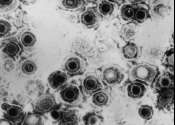New invention could revolutionize how diseases are diagnosed
(PhysOrg.com) -- An award-winning invention by Stanford doctoral students Richard Gaster and Drew Hall may change who diagnoses diseases ranging from flu to the Human Immunodeficiency Virus. The invention, called the NanoLab, ...









